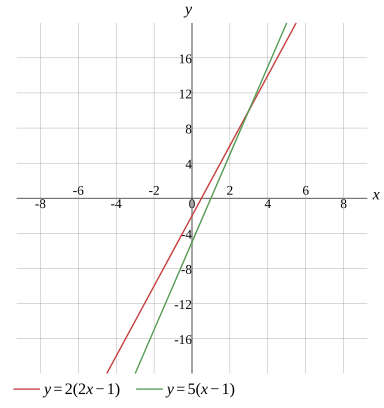Question
Solve the equation
x=3
Evaluate
2(2x−1)=5(x−1)
Calculate
More Steps


Evaluate
2(2x−1)
Apply the distributive property
2×2x−2×1
Multiply the numbers
4x−2×1
Any expression multiplied by 1 remains the same
4x−2
4x−2=5(x−1)
Calculate
More Steps


Evaluate
5(x−1)
Apply the distributive property
5x−5×1
Any expression multiplied by 1 remains the same
5x−5
4x−2=5x−5
Move the expression to the left side
4x−2−(5x−5)=0
Calculate
More Steps


Add the terms
4x−2−(5x−5)
If a negative sign or a subtraction symbol appears outside parentheses, remove the parentheses and change the sign of every term within the parentheses
4x−2−5x+5
Subtract the terms
More Steps


Evaluate
4x−5x
Collect like terms by calculating the sum or difference of their coefficients
(4−5)x
Subtract the numbers
−x
−x−2+5
Add the numbers
−x+3
−x+3=0
Move the constant to the right-hand side and change its sign
−x=0−3
Removing 0 doesn't change the value,so remove it from the expression
−x=−3
Solution
x=3
Show Solution

Rewrite the equation
x=3
Evaluate
2(2x−1)=5(x−1)
Multiply
More Steps


Evaluate
2(2x−1)
Apply the distributive property
2×2x−2×1
Multiply the numbers
4x−2×1
Any expression multiplied by 1 remains the same
4x−2
4x−2=5(x−1)
Multiply
More Steps


Evaluate
5(x−1)
Apply the distributive property
5x−5×1
Any expression multiplied by 1 remains the same
5x−5
4x−2=5x−5
Move the variable to the left side
−x−2=−5
Move the constant to the right side
−x=−3
Solution
x=3
Show Solution

Graph
